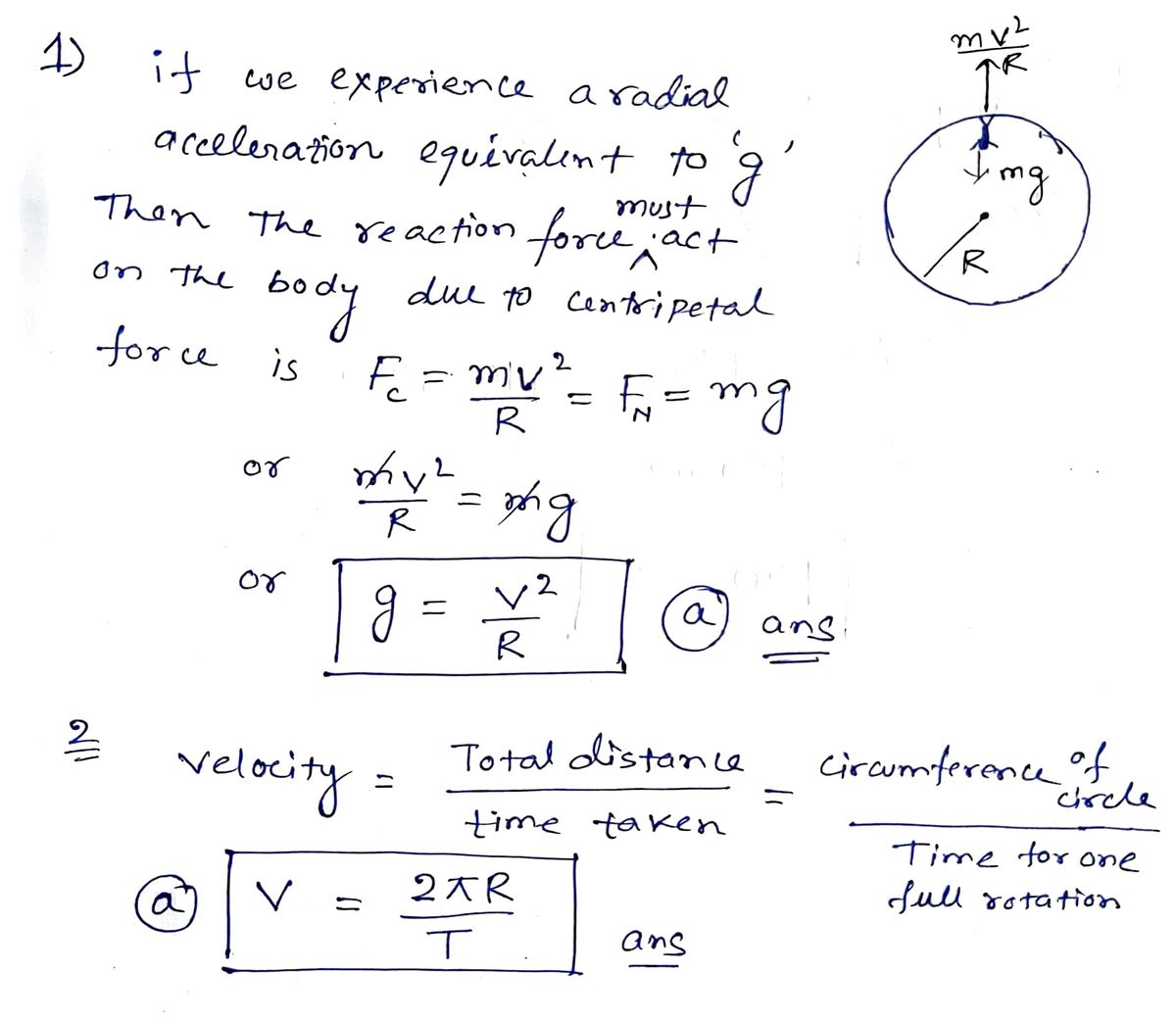We want to determine a rotation rate that will create a radial acceleration equivalent to gravitational acceleration on Earth. Which of the following is an equation that could be used to achieve this goal? a) g = v^2/R b) g = m v^2/R c) g = v^2/R - Fn/m d) mg = m v^2/R + Fc 2) Velocity can be represented as distance over time. If T is the amount of time it takes the station to make one full rotation, which of the following is an equivalent expression for velocity? a) v = 2πR/T b) v = πR^2/T c) v = T/2πR d) v = 2πRT 3) The tube shown here has an outer radius of 1 km. If the acceleration of 10 m/s^2 is desired, about how long should one rotation take?
Simple harmonic motion
Simple harmonic motion is a type of periodic motion in which an object undergoes oscillatory motion. The restoring force exerted by the object exhibiting SHM is proportional to the displacement from the equilibrium position. The force is directed towards the mean position. We see many examples of SHM around us, common ones are the motion of a pendulum, spring and vibration of strings in musical instruments, and so on.
Simple Pendulum
A simple pendulum comprises a heavy mass (called bob) attached to one end of the weightless and flexible string.
Oscillation
In Physics, oscillation means a repetitive motion that happens in a variation with respect to time. There is usually a central value, where the object would be at rest. Additionally, there are two or more positions between which the repetitive motion takes place. In mathematics, oscillations can also be described as vibrations. The most common examples of oscillation that is seen in daily lives include the alternating current (AC) or the motion of a moving pendulum.
Please refer to the picture when answering these questions...
1) We want to determine a rotation rate that will create a radial acceleration equivalent to gravitational acceleration on Earth. Which of the following is an equation that could be used to achieve this goal?
a) g = v^2/R
b) g = m v^2/R
c) g = v^2/R - Fn/m
d) mg = m v^2/R + Fc
2) Velocity can be represented as distance over time. If T is the amount of time it takes the station to make one full rotation, which of the following is an equivalent expression for velocity?
a) v = 2πR/T
b) v = πR^2/T
c) v = T/2πR
d) v = 2πRT
3) The tube shown here has an outer radius of 1 km. If the acceleration of 10 m/s^2 is desired, about how long should one rotation take?
a) 10 seconds
b) 1 minute
c) 10 minutes
d) 1 hour
4) What is the tangential speed of a person standing inside the station? answer in m/s
Please answer all questions.


Step by step
Solved in 3 steps with 3 images









